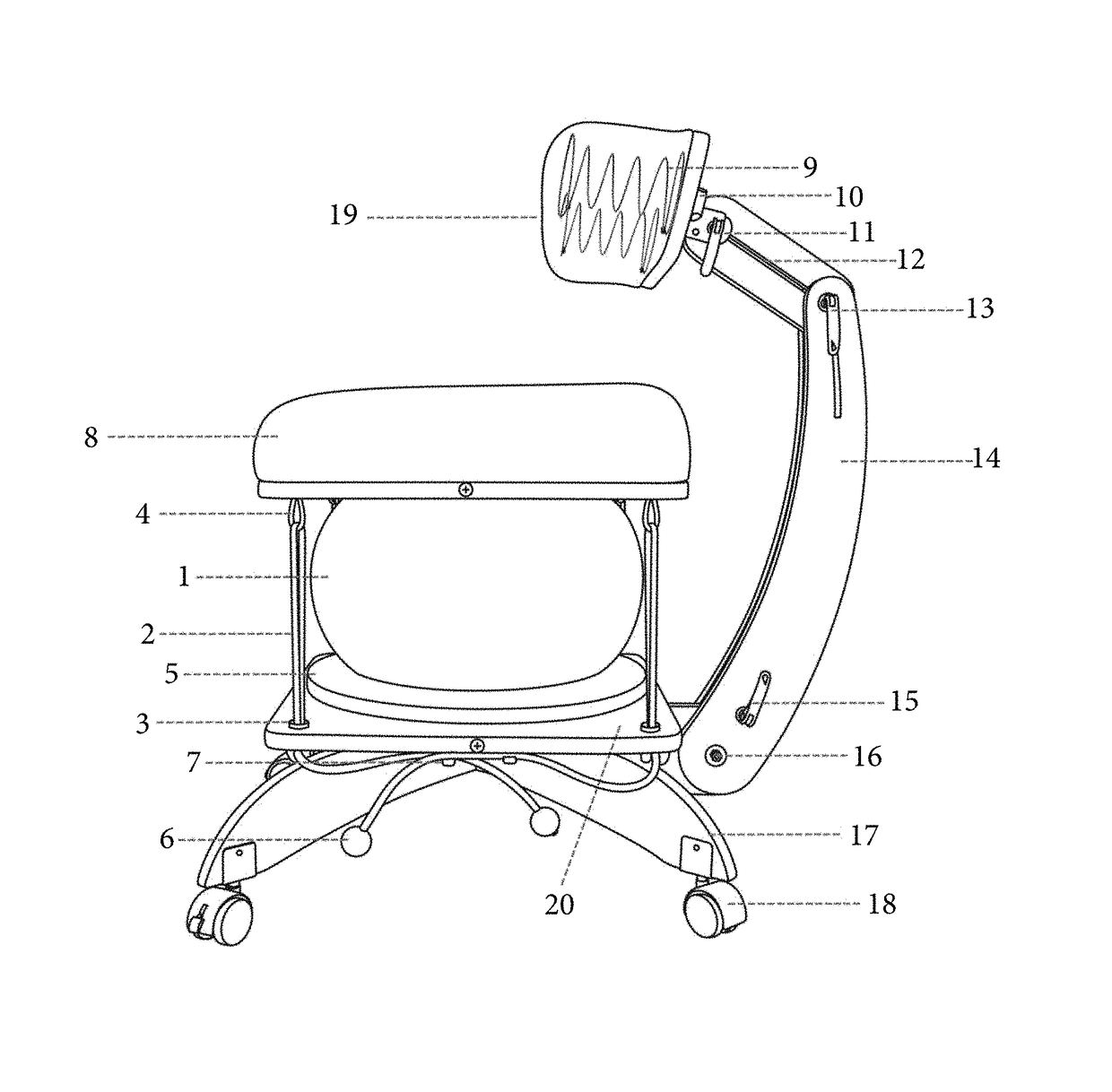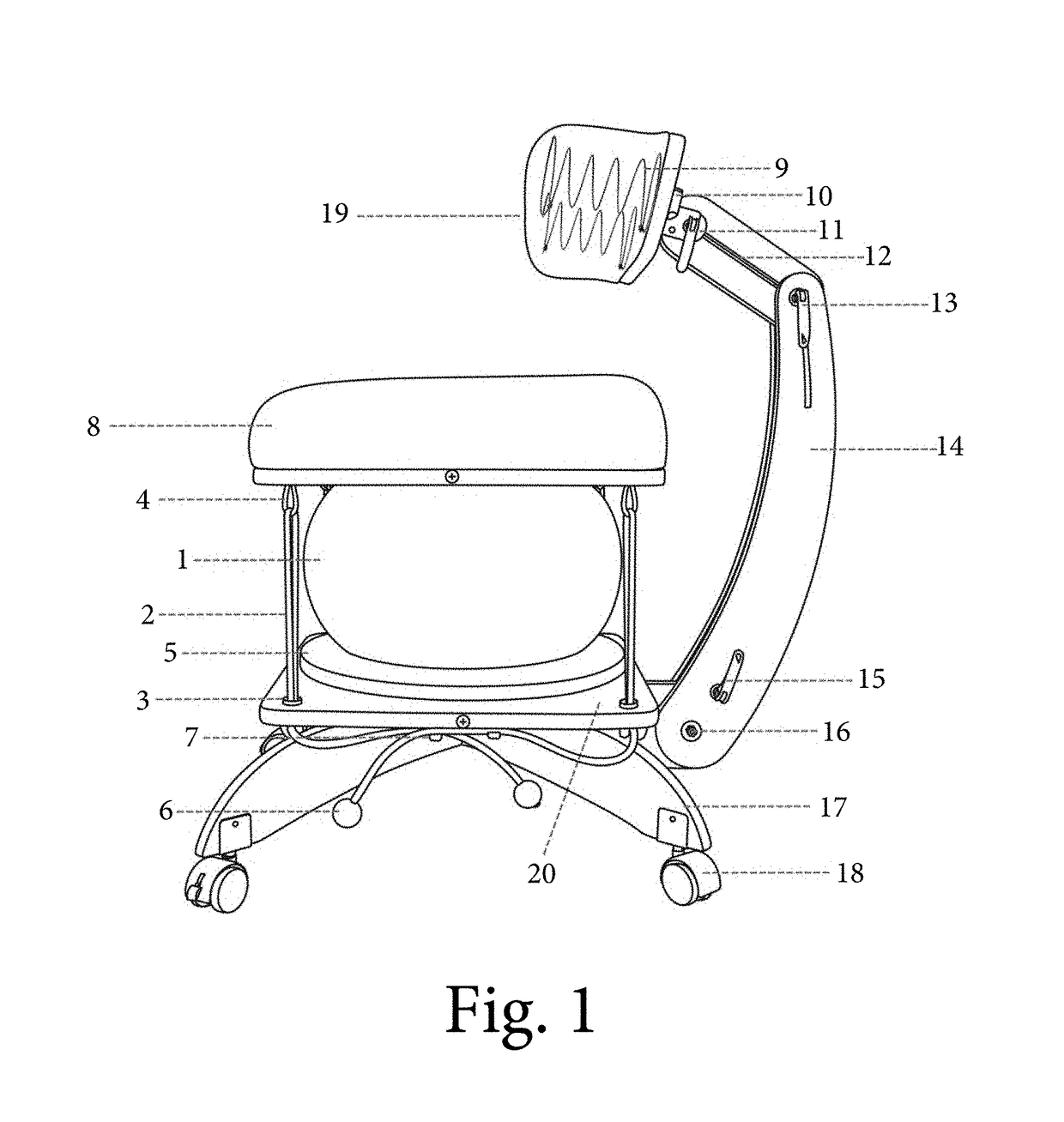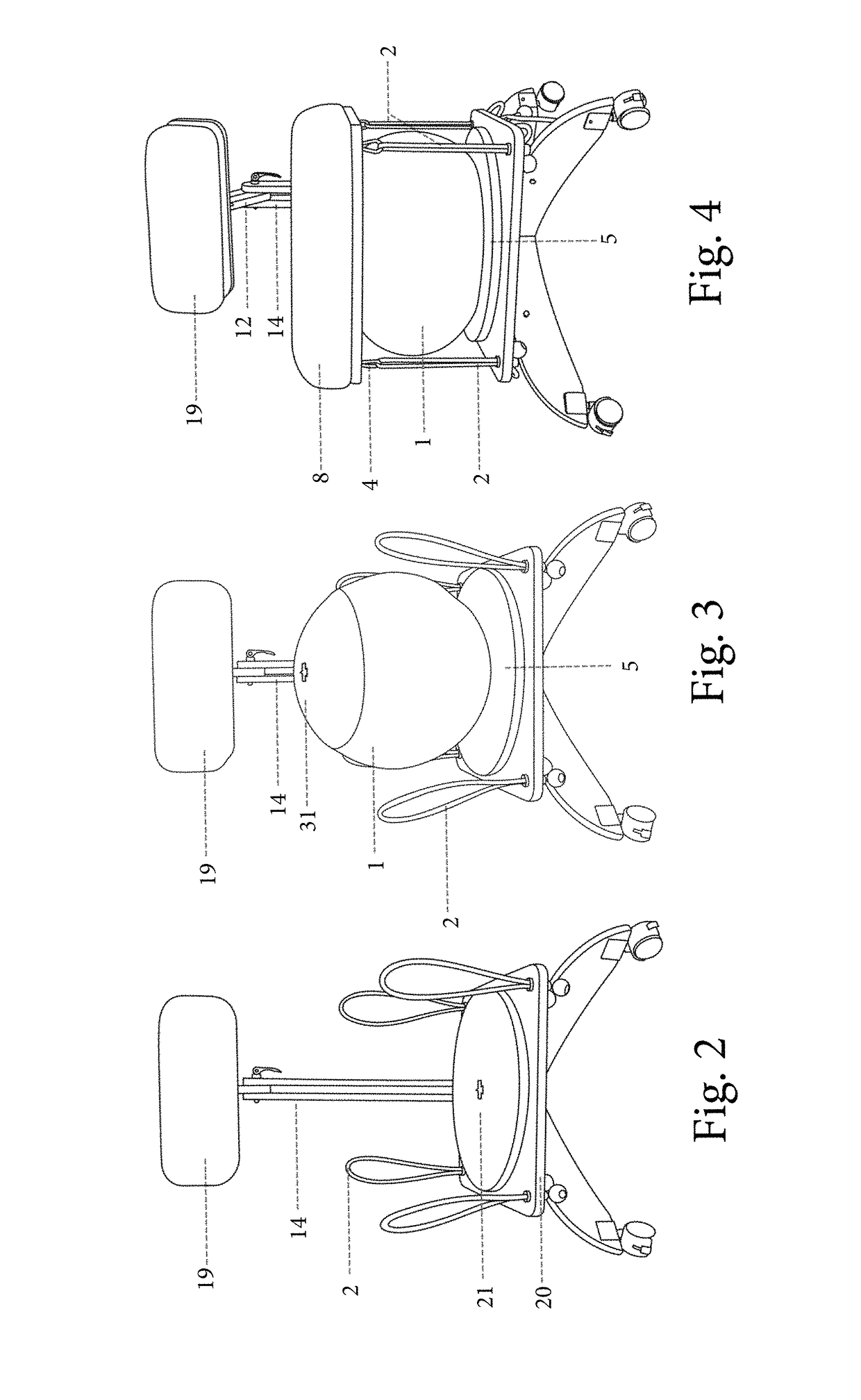Ergonomic chair
a chair and ergonomic technology, applied in the field of chairs and stools, can solve the problems of affecting the use of the chair, so as to improve the strength, endurance and flexibility of the user, and reduce fatigue and back pain. , the effect of improving circulation
- Summary
- Abstract
- Description
- Claims
- Application Information
AI Technical Summary
Benefits of technology
Problems solved by technology
Method used
Image
Examples
Embodiment Construction
[0017]The detailed description set forth below in connection with the appended drawings is intended as a description of presently preferred embodiments of the invention and does not represent the only forms in which the present invention may be constructed and / or utilized. The description sets forth the functions and the sequence of steps for constructing and operating the invention in connection with the illustrated embodiments.
[0018]The present invention features a chair having a contoured seat cushion mounted on top of an exercise ball with four tension-adjustable elastic cords such as bungee cords. The shock cords attach to the underside of the seat cushion by looping through spring-eye carabiner type hooks, and passing through grooved locking tubes with v-channels for adjusting the bungee cord tension. The ball sits on top of a swivel plate, so that dynamic motion and counterbalancing are attainable for a variety of ergonomically beneficial seating styles.
[0019]The chair has an...
PUM
 Login to View More
Login to View More Abstract
Description
Claims
Application Information
 Login to View More
Login to View More - R&D
- Intellectual Property
- Life Sciences
- Materials
- Tech Scout
- Unparalleled Data Quality
- Higher Quality Content
- 60% Fewer Hallucinations
Browse by: Latest US Patents, China's latest patents, Technical Efficacy Thesaurus, Application Domain, Technology Topic, Popular Technical Reports.
© 2025 PatSnap. All rights reserved.Legal|Privacy policy|Modern Slavery Act Transparency Statement|Sitemap|About US| Contact US: help@patsnap.com



